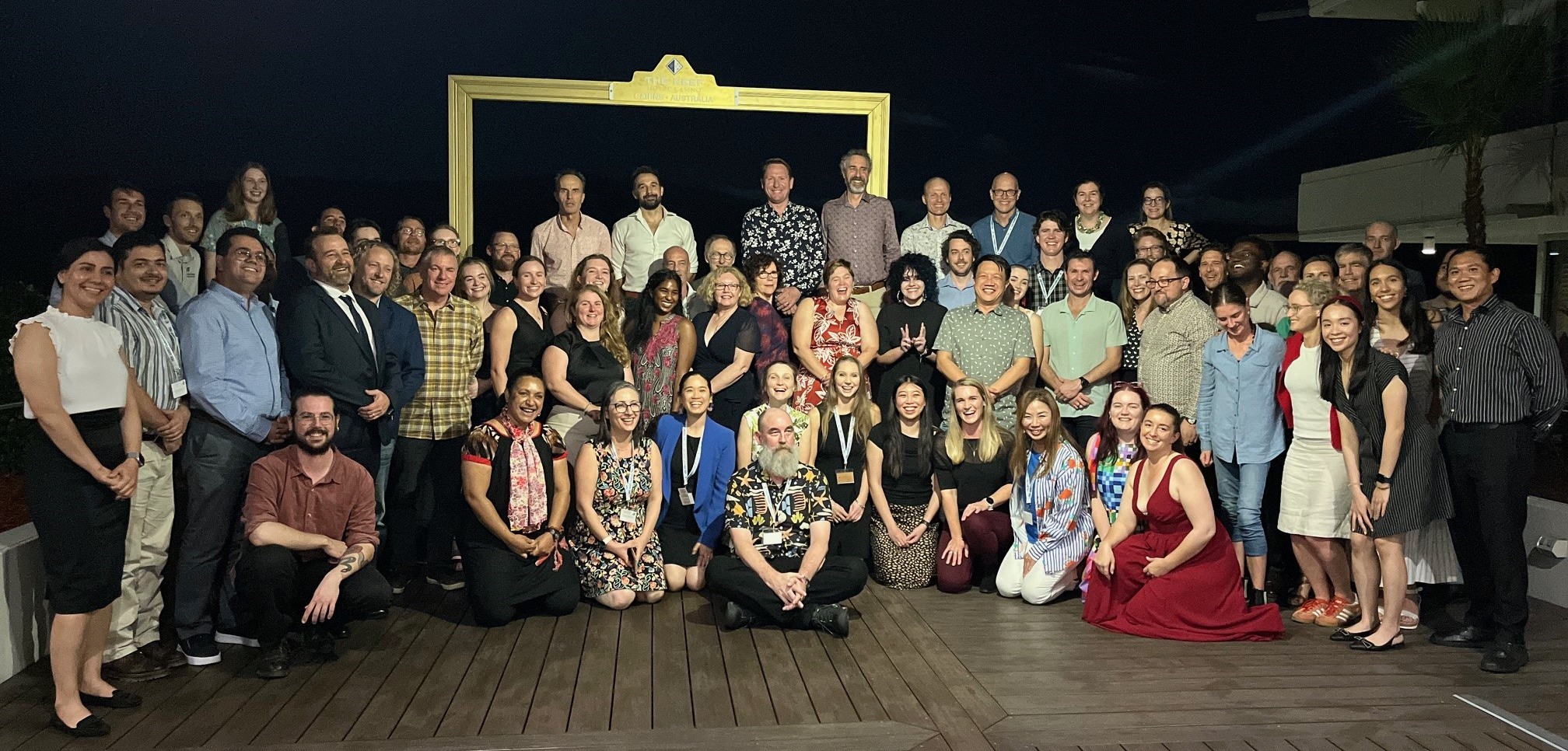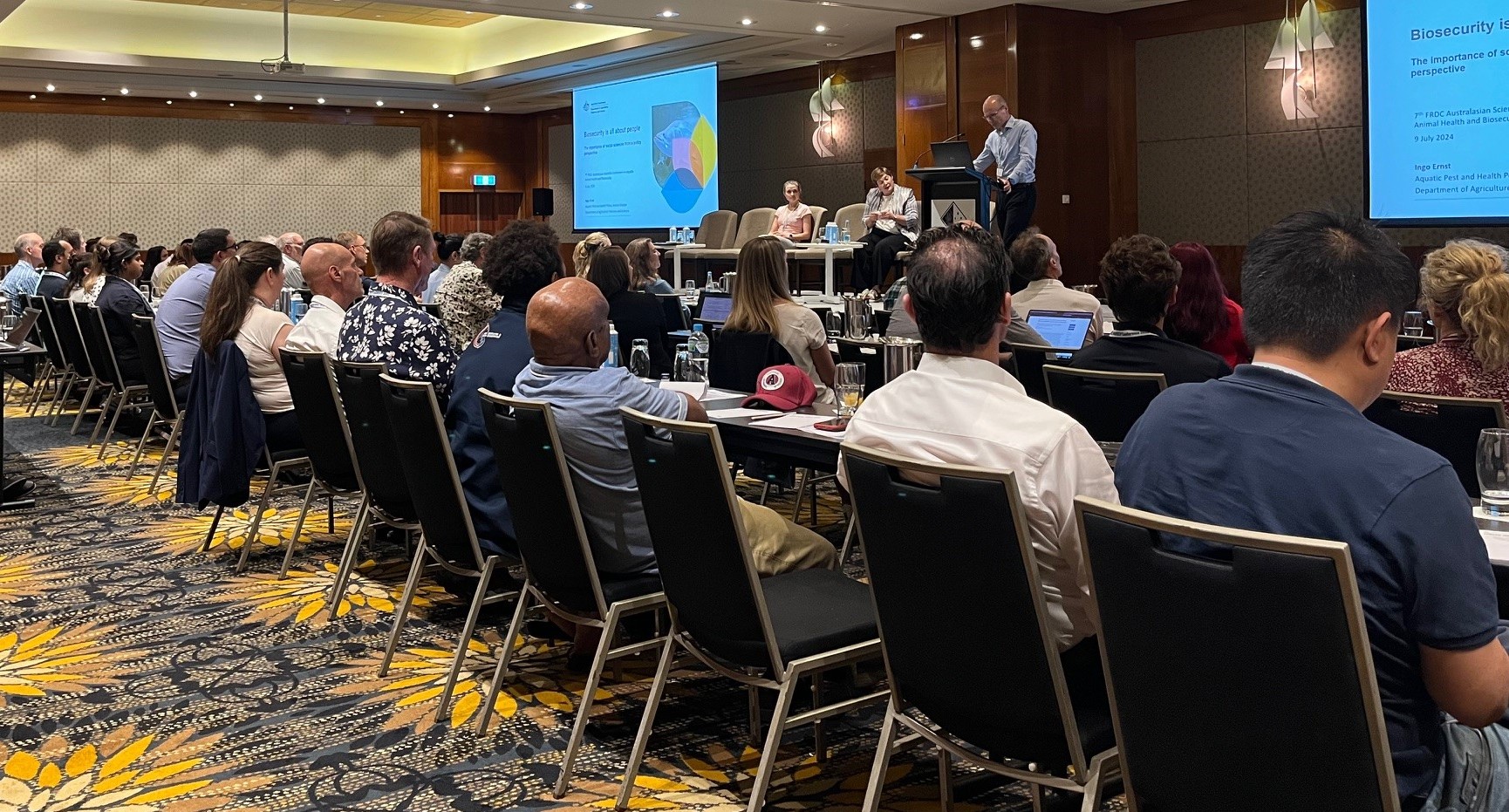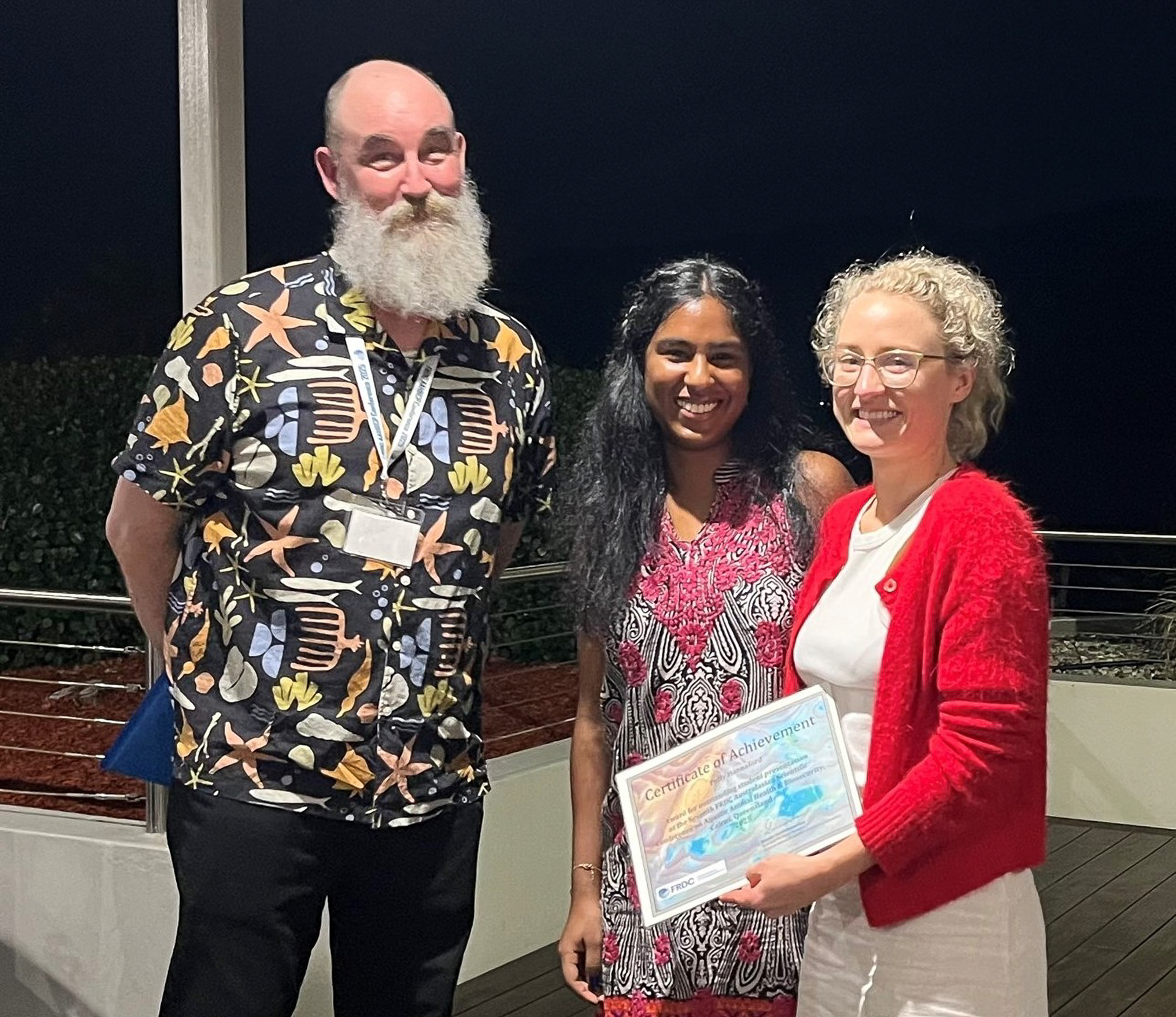Nearly 100 attendees were at the 7th FRDC Australasian Scientific Conference on Aquatic Animal Health & Biosecurity (ASCAAHB).
Split evenly across industry, research and government sectors, including a significant student cohort, the 2025 ASCAAHB centred on the technological innovations to improve the health and production of aquatic animals.

Aligning with AQUAPLAN 2022–2027, Australia’s national strategic plan for aquatic animal health, the theme was chosen by the FRDC Aquatic Animal Health and Biosecurity Coordination Program (AAHB) committee to address the need to boost efficiency and sustainability through advances in technology, particularly in aquaculture practices.
Spanning three and a half days, the conference involved more than 50 outstanding presentations. It also included three inspiring keynote speakers: Tony Charles from Australian Prawn Farms; Colin Johnston from Tassal Group and Tina Marie Weier Oldham from the Norwegian Institute of Marine Research, all of whom enthralled the audience.
The FRDC ASCAAHB Organising Committee Chair Dr Tracey Bradley said each of the keynote speakers were all “quite different yet exceptional.”
Tracey said it was eye-opening to learn of the meticulous attention to detail Australian Prawn Farms apply to ensure the health of farmed prawns, from extensive water treatment, pathogen screening to fine tuning hatchery and grow out operations.
Colin’s presentation focused on the drivers of technology and how sector representative bodies can harness technology to solve problems quickly and in turn make more longer-term strategic decisions.
Tracey said Colin’s presentation highlighted the bright future seafood protein has given the sector’s feed conversion efficiency is a fraction of traditional land-based agriculture.
It was also fascinating to hear Tina explain some of the novel technological interventions used in Norway to enhance the productivity, sustainability and animal welfare of salmon aquaculture, Tracey said.

The social sciences session showcased that people-focused strategies, trust-building and policy grounded in human behaviour, are central to uplifting aquatic animal health and biosecurity.
It was also interesting to learn about Motivational Interviewing (MI), an evidence-based method which has had success in promoting change and growth, Tracey added.
The Department of Agriculture, Fisheries and Forestry’s (DAFF) presentation on the role of trust and working relationships in emergency responses, was another highlight of the event, especially given the recent algal bloom outbreak in South Australia.
Participants learnt about the Integrated Model of Organisational Trust, which explains how trust is developed through perceptions of ability, benevolence and integrity and the importance of social identity theory to foster shared values and improved outcomes.
The DAFF presentation emphasised how trusted is crucial in preparedness for the management of disease outbreaks and that while relational aspects can be improved through structured exercises, relationship-building should always be prioritised.
Ten PhD students also presented at the conference.
‘World to me’: first time participant takes out best PhD presentation prize
Australian National University’s (ANU) Polly Hannaford, a first-time conference attendee, took out the coveted prize for best PhD student presentation. Polly said the opportunity to attend ASCAAHB was invaluable for her academic development.

“The conference was a fantastic experience and a great development initiative for PhD students and early career researchers like myself,” Polly said.
Polly’s PhD presentation, which drew upon her research into finding tools to reduce the risk of exotic aquatic animal pathogens and improvements in disease risk management, focused on the unique evolutionary history of megalocytiviruses. Megalocytiviruses are a specific group of pathogens that cause high mortality in commercially important fish such as Barramundi (Lates calcarifer), Murray Cod (Maccullochella peelii), Yellowtail King Fish (Seriola lalandi) and Southern Bluefin Tuna (Thunnus maccoyii).
FRDC Research Portfolio Manager Deepika Satchithananthan, who was a presentation adjudicator, said Polly was engaging and dynamic.
“Her work was high level, covering all the key messages. She walked us through each of her findings in a way that allowed people outside of this area of expertise to understand the issues around these pathogens,” Deepika said.
Polly was awarded a certificate of achievement and a $500 cash prize. She said the recognition of her research meant the “world to her.”
“It’s such a great feeling to have my work well received by government, academia and industry,” she said.
“A big thank you to FRDC.”
More information:
FRDC Project 2022-029: Understanding the risks associated with climate change on infectious diseases affecting the seafood industry
FRDC Project 2020-040: Aquatic animal welfare – a review of guidance documents and legislation
FRDC Project 2021-048: “Ready, set, go!” preparing for emergency disease outbreaks in aquatic animals
FRDC Project 2023-006: Assess the future needs of Australia's aquatic animal disease diagnostic system
Contact Details
Nick Moody
FRDC Aquatic Animal Health & Biosecurity Coordination Program Leader
W: FRDC Aquatic Animal Health & Biosecurity Coordination Program





